Versions and Amendments
This version of CTIQ replaces all previously published versions. Where an amendment or substantive change is made in succeeding editions, those changes are recorded under ‘Amendments’, (see below).
This version replaces:
Construction timbers in Queensland: properties and specifications for satisfactory performance of construction timbers in Queensland—Class 1 and Class 10 buildings, books 1 and 2 published as:
- 2006, Department of Primary Industries and Fisheries, Queensland.
- 2010, Department of Employment, Economic Development and Innovation, Queensland.
- 2013, Department of Agriculture and Fisheries, Queensland.
- 2017, Department of Agriculture and Fisheries, Queensland.
Any consideration of timber used in construction in Queensland during the period May 2007 to May 2010 should refer to the provisions detailed in the (printed) 2006 edition.
Any consideration of timber used between June 2010 and September 2013 should refer to the provisions detailed in the (PDF) 2010 edition.
Any consideration of timber used between October 2013 and August 2017 should refer to the (PDF) 2013 edition.
Amendments and the date they take effect are listed here:
Revision. 2010, May. Changes related to the repeal of the Timber Utilisation and Marketing Act 1987 (TUMA) and revised local government boundaries due to local government amalgamations.
Amendments
1. 2013, 1st June. Book 2, Index number 531, Mastixiodendron pachyclados (garo garo, origin PNG) natural durability ratings revised to: Above-ground (4); In-ground (4).
2. 2017, 15th August.
2.1. Book 1. Definitions and descriptions: Target design life: 50 years; Environment: In-ground; conditions of use, point 4 revised to: ‘Timbers classed as In-ground durability class 3 and 4 and that are coded H5 are suitable for these uses (TDL 50 years, in-ground), if preservative treated to H5 level in accordance with AS 1604, and may contain limited amounts of unpenetrated or inadequately treated heartwood not comprising more than 20% of the cross-section of the piece at any point.’
2.2. Book 1. Definitions of H level, H3, H4 & H5 added text: ‘N.B. Currently, the heartwood of most hardwood timbers and some softwood timbers cannot be treated to H3, H4 or H5 level of protection. The timber treater is to ensure that their process has achieved the required level of penetration to meet the stated H level specification.’
2.3. Book 2. Added timber, properties and conditions for use: Index number 608, cumaru (Dipteryx odorata).
2.4. Book 2. Name change: Eucalyptus viminalis standard trade name changed to gum, manna (from gum, ribbon, rough-barked).
3. 2018, 1st October. Book 2, Index number 531, Mastixiodendron pachyclados (garo garo, origin PNG) strength group ratings revised to: Green (S4); Dry (SD4).
4. 2020, 18th June.
4.1 Book 2 Schedule B Part 1. Split 32: ash, mountain into Part a and Part b to denote Victoria and NSW as lytus non-susceptable (NS) and Tasmania remains as lyctus susceptable (S). Geographical source must be verified.
4.2 Book 2 Schedule B Part 1. Split 26 ash, alpine into Part a and Part b to denote Victoria and NSW as lytus non-susceptable (NS) and Tasmania remains as lyctus susceptable (S). Geographical source must be verified.
4.3 Book 2 Schedule A Part 1. Two additional rows added (607a & 607b) to accomodate ash, Victorian. Those specifically from Victoria and NSW to receive a lyctus non-susceptible rating (NS) and those from Tasmania to receive a lyctus susceptible (S) rating. Geographical source must be verified.
4.4 Book 2 Schedule A Part 2. Additional row will be added to include ash, Victorian.
